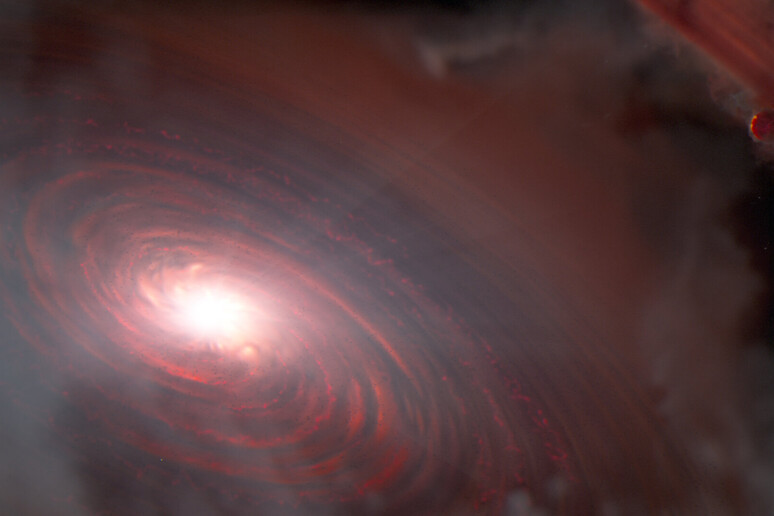Scientists have for the first time identified water in a nascent planetary system about 370 light years from Earth, around the star Pds 70, which is a little smaller than our Sun. The discovery, published in the journal Nature, was led by Italian Giulia Perotti of the Max Planck Institute for Astronomy in Heidelberg using NASA’s James Webb Space Telescope. Italy took part in the study with the National Institute of Astrophysics.
The observation was made using the MIRI (Mid-InfraRed Instrument) and the analysis of the data indicates that the water is in the form of hot vapour, compatible with a temperature of around 330 degrees Celsius. It is also the first time that water has been onserved in a relatively old gas and dust disc, estimated to be about 5.4 million years old. Since previous studies had failed to detect water in the central regions of similar discs, astronomers have always suspected that it might not survive the stellar radiation.
For now, the origin of the water remains unclear, and there are several hypotheses as to where it might come from. One is that the water vapour could be left over from a nebula that was initially rich in this molecule; another that the origin could be interstellar; or even that a combination of oxygen and hydrogen occurred. "The truth probably lies in a combination of all these options," says Perotti.
Riproduzione riservata © Copyright ANSA













